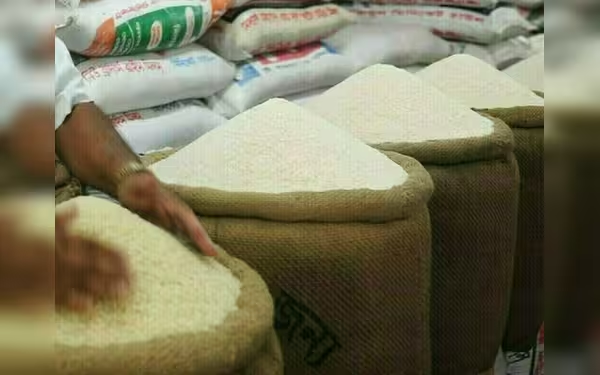Saturday, November 16, 2024 05:49 PM
Rice Prices Plummet in Asia Following India's Export Policy Changes
- India's rice export relaxations lead to price drops.
- Vietnam and Thailand also see declining rice prices.
- Bangladesh faces potential price increases due to floods.
 Image Credits: brecorder
Image Credits: brecorderRice prices in Asia drop significantly due to India's relaxed export restrictions, impacting global supply and demand.
In recent weeks, rice prices across major Asian markets have experienced a significant decline, reaching their lowest levels in over a year. This drop is largely attributed to a surge in supply following India's recent relaxation of export restrictions on this essential staple. As the world's leading rice exporter, India's policy changes have a profound impact on global rice prices and availability.
This week, India's 5% broken parboiled rice was quoted at $490-$495 per metric ton, marking the lowest price since August 24, 2023. The decline in prices is compounded by weak demand and a depreciation of the Indian rupee. Just last week, traders were offering rice at a slightly higher range of $494-$498. A Kolkata-based exporter noted, “Both white and parboiled rice aren’t selling well right now. Buyers just aren’t comfortable with the current prices, especially after the minimum export price kicked in.”
In a strategic move, India reduced the export duty on parboiled rice to 10% and set a floor price of $490 per metric ton for non-basmati white rice. This decision has led to increased supply in the global market, as highlighted by a trader in Ho Chi Minh City, who stated, “Prices edged lower on strong supplies on the global market after India relaxed its export restrictions.”
Meanwhile, in Vietnam, the price of 5% broken rice has also seen a decrease, being offered at $538 per ton on Thursday, down from $552 the previous week. This marks the lowest price since July 2023. According to Nguyen Ngoc Nam, chairman of the Vietnam Food Association, the country’s rice exports are projected to exceed 7.6 million tons this year, with shipments in the first nine months rising by 8.9% to 6.99 million tons compared to the previous year.
In Thailand, the price of 5% broken rice has slightly decreased to $510 per ton, down from a range of $510 to $515 last week, marking the weakest prices since June 2023. A Bangkok-based trader commented that demand has been subdued as buyers are cautious following India's lifting of the export ban. Another trader mentioned that the supply at the end of the harvest season is expected to be robust this year.
Conversely, in Bangladesh, traders are anticipating a rise in prices due to recent floods in the northern region, which threaten crop production. This situation underscores the delicate balance of supply and demand in the rice market, where local conditions can significantly impact prices.
The recent fluctuations in rice prices across Asia highlight the interconnectedness of global agricultural markets. As India continues to adjust its export policies, other countries are likely to feel the effects, both in terms of pricing and availability. For consumers and traders alike, staying informed about these developments is crucial, as they can have far-reaching implications for food security and economic stability in the region.













